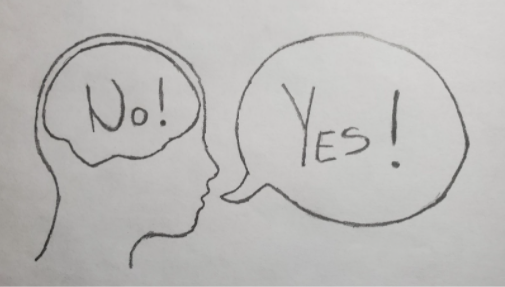The Art of a Lie
Society attempts to establish a general rule into most of our moral codes: lying is unacceptable. Many keep this rule in the back of their mind. It is simply unallowed.
Ultimately, lies evade reality. What exists holds the base of truth; yet, most of us lie every single day. Whether this is through an omission of detail or plain deception. It is important to first understand what may be causing someone to be untruthful to properly recognize when they are lying.
Lies fall into two main categories: “big lies” and “white lies.” Big lies are more insincere and aim to protect the deceiver; this ranges from plagiarism to trying to get away with murder. White lies are less significant and usually harmless. For example, laughing at a joke that wasn’t funny or telling a loved one you appreciate a gift that you don’t. They are meant to protect others’ feelings.
The University of Wisconsin conducted a study to measure how often people lie. 75% of respondents reportedly lied an average of twice a day.
The behavioral tendency to lie is a result of how morality has been developed. This is majorly affected by childhood environment and upbringing.
“If [an individual] is raised in an environment where telling the truth is encouraged and modeled, they’re more likely to have this aversion to lying,” AP Psychology teacher, John Rios said, “I’m not saying that they’re [always] not gonna lie, but when they do, they realize that they don’t feel good about it. They realize that it’s not right.”
However, a guardian’s parental style is not the only factor that comes into play in regards to a child’s morality. Lawrence Kohlberg was an American psychologist who researched stages of this type of moral development in boys.
“He read them a story called the Heinz Dilemma,” Rios said, “[Kohlberg then] asked children, “Well, is Heinz right or is Heinz wrong?””
The Heinz Dilemma is a moral predicament often used as an example in morality and psychology classes. It goes as follows:
The wife of a man named Heinz is on her deathbed. A druggist discovers the cure, but he chooses to sell it at a price of $2000, about 10 times more than what it costs to produce. Despite Heinz’s best efforts to obtain the money, he only reaches half of what he needs. After unsuccessfully trying to negotiate a lower price with the druggist, Heinz chooses to steal the drug.
Kohlberg found that children, ages 0 to 9, are at the stage of pre-conventional morality. Rather than having and following a moral code, these children focus on reward and punishment.
“In other words, it’s all about them and whether or not they’re gonna get in trouble,” Rios said.
From age ten to early adolescence, kids reach the stage of conventional morality. This is when individuals begin to accept and incorporate societal standards.
“At a conventional level, some might say, ‘Listen to the law’. If the law says it’s wrong, then it’s wrong.” Rios said.
Next comes post-conventional morality, distinguished by a generally universal ethical understanding. This occurs when individuals start to establish their own moral guidelines based on their understanding of the world.
“Looking at it from a different perspective,” Rios said, “they would argue, ‘Well, no. There are situations where those things [that go against society] are morally acceptable to do.’”
here are several simple signs that someone may be lying. This is in part because lying brings stress in consideration of negative consequences. Here are the common and more obvious tells of deceit:
Vague descriptions
Inability to maintain eye contact
Lack of specificity
Awkward/fake smiles
Fragmented speech
Slouching
However, it is important to keep in mind the likelihood of good intention behind deception. 90% of daily lies are simply white lies.
While we, as humans, hate not knowing the truth, think about where someone may be coming from when they make the decision to lie. Are they doing it to protect themselves, or are they trying to protect you?








![Bill HB24-1448: What Does It Mean? [OPINION]](https://ghschronicle.com/wp-content/uploads/2024/05/Hayne-Photo-1-600x450.png)




![Colorado Rockies: No Trophy in Sight [Opinions]](https://ghschronicle.com/wp-content/uploads/2024/05/IMG_3018-2-600x450.jpg)

![Freshman 101: Great Intentions; Repetitive Practices [Opinions]](https://ghschronicle.com/wp-content/uploads/2024/05/Screen-Shot-2024-05-02-at-1.58.44-PM-600x492.png)

